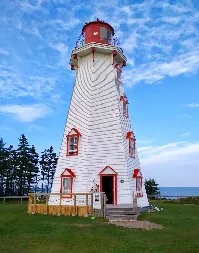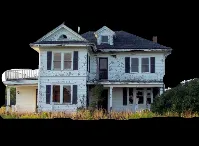When I first saw @shaka's template photo in this week's LMAC collage contest (#162) I thought of using the center of the picture as a stage. Then I thought again and decided I wanted to break up that model and start fresh. I focused on the cliffs. For me, when thinking of legendary cliffs, Dover comes to mind.
First I made a still image. Then I decided that a little animation might be engaging, so I made a GIF. Always with a GIF, however, clarity of image is lost. It's a trade-off.
The theme of my collage is taken from life. Dover is one of many destinations for those who try to immigrate using unofficial methods. In the case of Dover, the immigrants use boats to cross the English Channel.
Still Version of My Collage
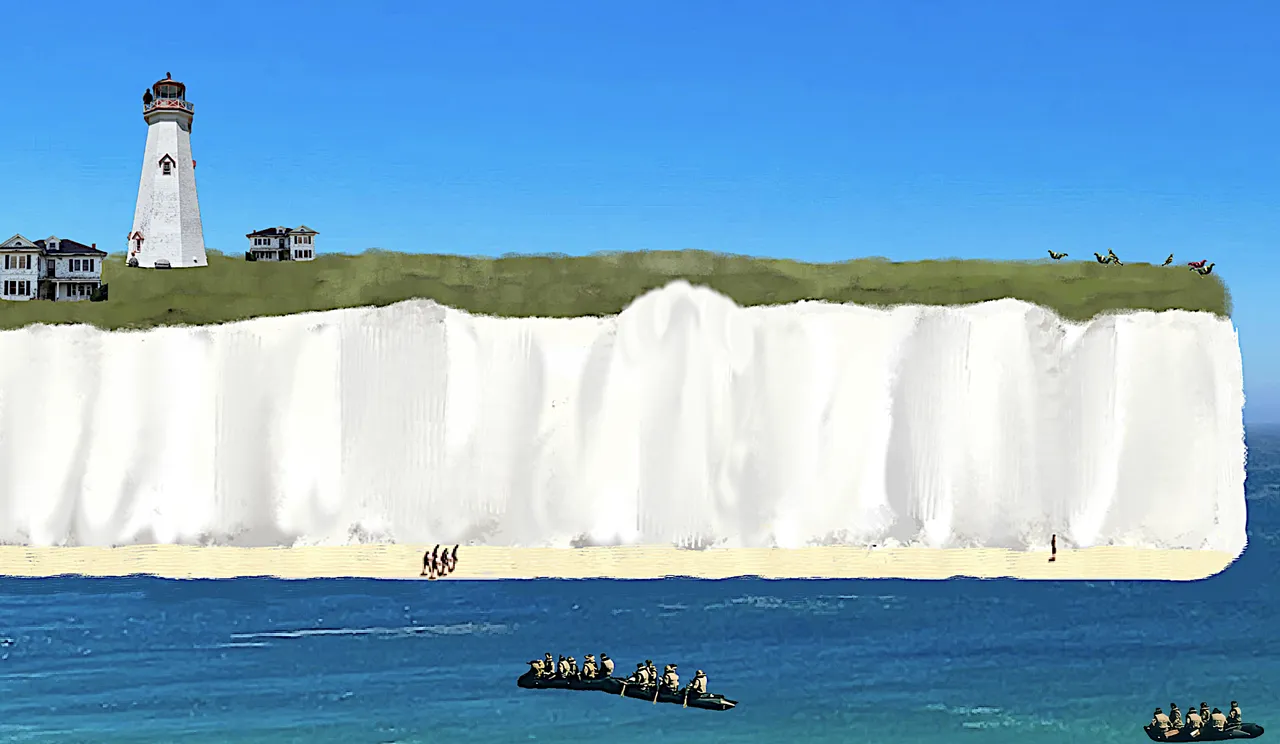
Animated Version
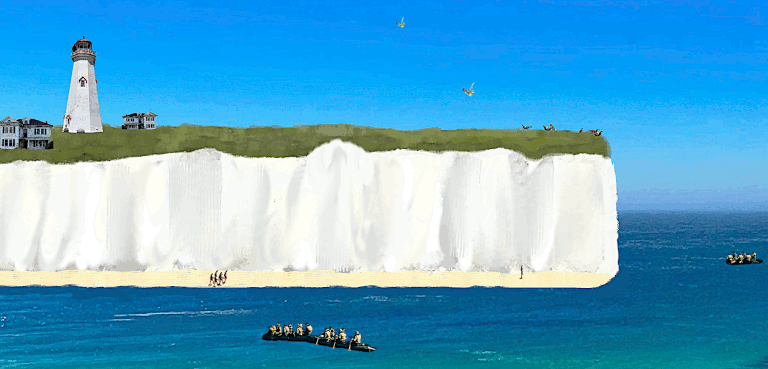
The Template Photo, by @shaka, for LMAC #162

The first time I heard the expression 'boat people' was at the end of the Vietnam War. People were desperate to flee that war-torn country. They fashioned small, unreliable craft to flee to another country. According to the Encyclopedia Britannica, the end of the Vietnam War was the first time the term 'Boat People' came into use. Since then, millions of emigrants have crossed various bodies of water in search of a better place to live, and they have used unreliable, unsafe water craft to do this.
In the U.S., it might be said that many of us have ancestors who were, in a way, 'boat people'. For a good part of history, (before 1855) anyone could come to the U.S. shores for any reason in any way and just walk in. My distant paternal forebears did that in the mid 1600s. They fled religious persecution. My great-great-great paternal grandfather did that in 1837. He fled dire economic circumstances. In 1906, my maternal grandparents arrived in steerage on a large ocean liner and were 'processed' at Ellis Island. They were seeking a better future.
Nowadays, people on boats seeking to immigrate may be found literally all over the world. They cross the Caribbean. They cross the Mediterranean. They cross the Indian Ocean. And they cross the English Channel, with the object of landing in Dover. It happens that the narrowest part of the English Channel is the Dover Strait, between Calais and Dover.
View of Dover From Cap Gris-Nez in the Pas-de-Calais Département (France)

Credit: Rolf Süssbrich. Used under Creative Commons Attribution-Share Alike 3.0 Unported. Before the opening of the Chunnel in 1994, if one didn't fly, a boat was the only way to cross from Calais to Dover. That's how I crossed in 1972.
Recently, UK Prime Minister Rishi Sunak announced a "Stop the Boats" initiative at Dover to halt the flow of small craft carrying immigrants. Officially, those who arrive in this way at Dover are asylum seekers. This status complicates the issue not only for the government but also for some residents of Dover.
There is concern that the sheer number of people arriving is not manageable. At the same time, there is empathy for people who are so desperate that they place their families at risk in choppy waters of the English Channel.
The Channel is rough. Here is a video (by the Telegraph) in which the narrator explains how rough and perilous the Channel may be for the small craft the asylum seekers travel in.

The Irish Times reports that in 2022, 45,700 asylum seekers crossed the English Channel in small craft. (That number must be approximate.)
Where Do They Come From?
According to BBC News, asylum seekers (not just Dover) in the UK come overwhelmingly from Albania--67%. Other countries (listed in order of asylum totals): Afghanistan, Iran, Iraq, Syria, Bangladesh, Eritrea, India, Sudan, Pakistan. (This list does not include refugees from Ukraine).
Who Are They?
Amnesty International explains the different labels that are used to describe people who leave their countries/homes and seek a better/safer life elsewhere.
The terms “refugee”, “asylum seeker” and “migrant” are used to describe people who are on the move, who have left their countries and have crossed borders
Dover happens to be an entry way for those who want a better place to live. I don't live in Dover. I live in the U.S. We have our own border issues, with people trying to enter the country.
U.S. Detention Center on the U.S./Mexican Border
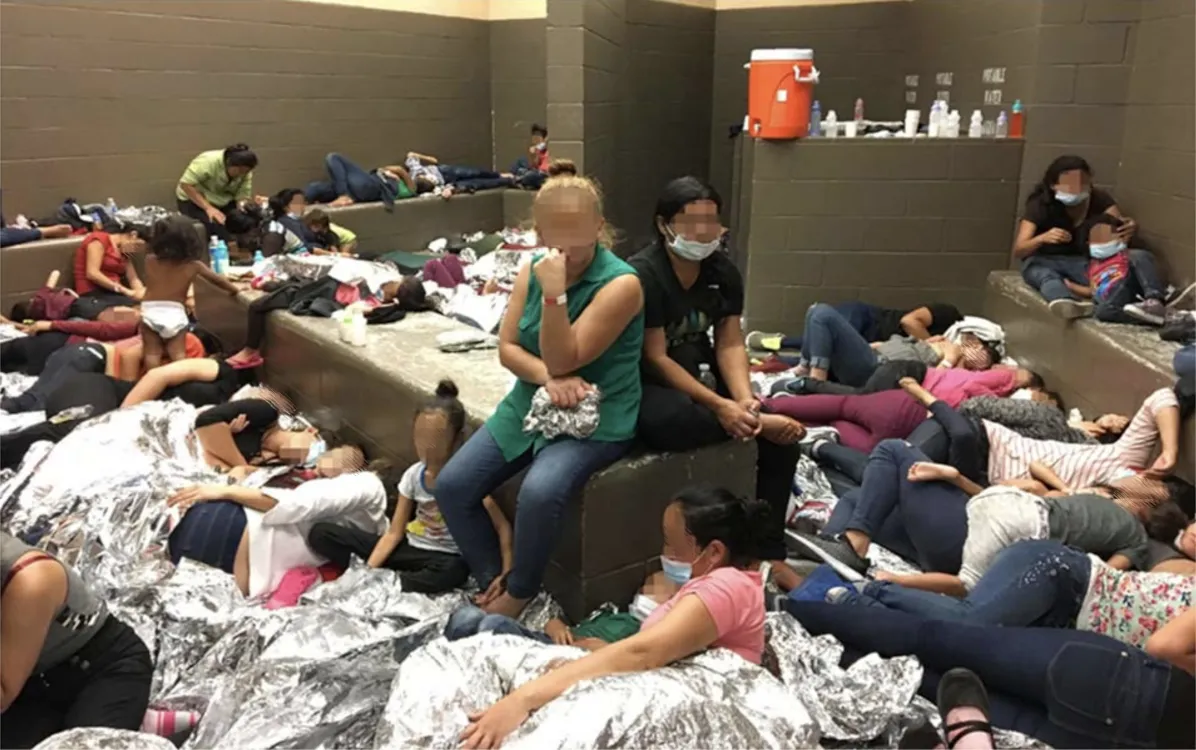
Credit: U.S. Dep't of Homeland Security, 2019. Public domain
For me, in my collage, the white cliffs are a beacon, a symbol to travelers who seek a better place. Dover represents hope. But what do those travelers represent to the people of Dover?
As is always the case, the LMAC Image Library, LIL, was a rich source for my collage. I borrowed from four LMAC veterans this week, and I borrowed from one Unsplash photographer.
From LIL:
@yaziris
Stationary birds on the cliff
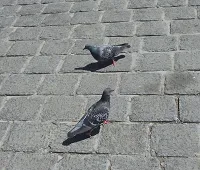
@muelli
Person in the lighthouse
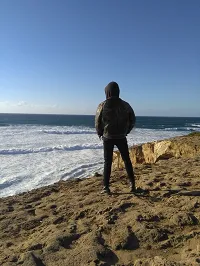
@edgarafernandezp
Flying birds
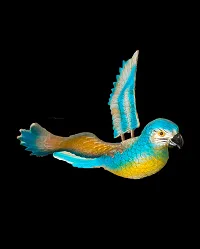
Unsplash
Jametlene Reskp
Migrants in boats
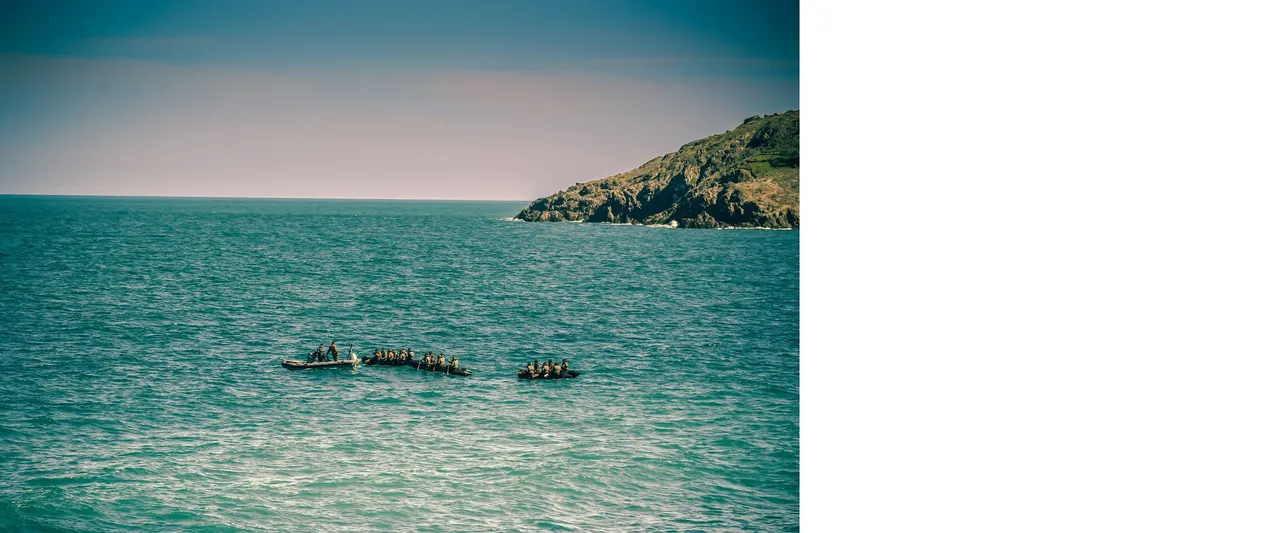
Process (approximate)



I manipulated a few extractions from larger images:
- Stationary birds: I wanted to have varied colors (even if no one could see the different colors 😄)
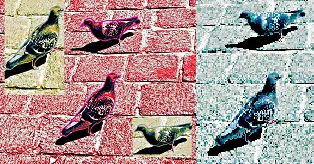
- Person in the lighthouse: I wanted to put him there, although, once again, no one might see him.
- People on the beach: these came from @shaka's original template, as did the sand, the water, the cliffs, the ground on the cliff, and the sky.
I painted in the grass on top of the cliff and the shadows/indentations in the cliff face. Different brushes on Gimp were helpful here: grass, pencil scratch, hatch pen, and smudge.
The animation layers were made using Paint 3D and Gimp.
Making collages is a creative exercise and a learning experience (I don't compete in the contest). This week I delved into the sobering, complex issue of immigration. I have worked in my own community with immigrants, as a volunteer. And yet, as is true every week when I write a blog for my collage, I know a little more about the subject now than I did before.
Please check out this week's winning collages at the LMAC community site. Tomorrow we begin another round (#163). Come back then, discover the new template, and try your hand at making something unique.
You can see that LIL, the LMAC Image Library, is an important part of my collage creating process. Everyone on Hive can contribute to the library and borrow from the library. Learn about the procedure here.
I wish all my readers peace and health.

